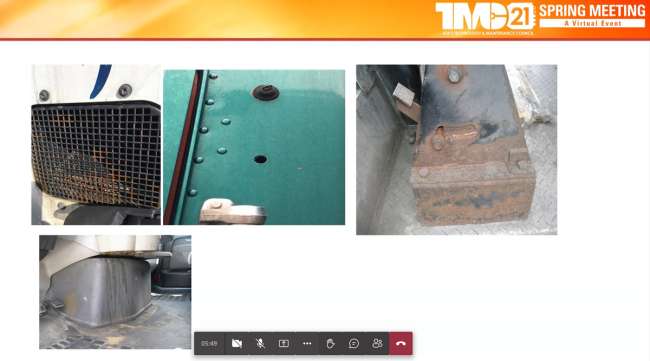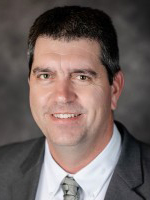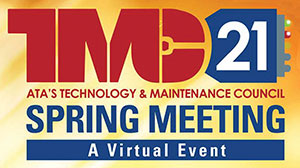Staff Reporter
Task Forces Set Sights on Controlling Corrosion

[Stay on top of transportation news: Get TTNews in your inbox.]
An American Trucking Associations Technology & Maintenance Council task force called for action April 16 to develop best practices to address cab corrosion.
TMC hosted the task force session as part of its spring meeting. Cab & Controls Task Force Chairman Tim May noted there hasn’t been much progress since fall, but now the group is ramping back up and needs trucking industry members to help.
“The purpose of the task force is to develop an RP, or recommended practice, to provide recommended solutions to prevent premature failure as a result of moisture or chloride intrusion into the cab area. The objective is to identify and minimize containment intrusion into the cab area, through both tested methods and preventative maintenance,” May said.

May
May also hopes those standard practices will include ways to make related repairs and buy new equipment to minimize corrosion. May, regional sales manager at Minimizer & Premier Manufacturing Co., plans to start holding monthly meetings on the issue and asked session participants to join him.
“Corrosion inside the cab can affect multiple safety features,” May said. “Corrosion can weaken the mounts. Wire connection can cause shorts and damage sensors. … Seat belt retractors not allowing the seat belt to operate properly. … Perspiration corrosion in the floors and seams that may allow exhaust fumes to enter into the cab.”
May also detailed the ways in which cab corrosion can occur. For instance, moisture or chlorides can enter into areas of the cab through cracks, dry rot, loose components or bad seals. Vulnerable spots include weatherstripping, marker lights, windshield wiper mounts, air intakes, heating and cooling systems, fresh air intake seals and cabin filter vents.
“So we had come up with some possible best practices to prevent in-cab corrosion,” May said. “Use a wet vac to remove moisture which may contain softer chlorides from door jams to prevent the start of corrosion. It’s important to identify wash solutions that can take away corrosive additives. If it’s not monitored it can alter the performance of cab components. Utilization of in-cab containment systems to remove chemicals that may contain corrosives that do not belong there.”

Also at TMC 2021
May added that mechanic training should include information about the corrosiveness of each chemical used, to help prevent issues before they occur. He recommended trucks get a scheduled washing after each de-icing. He also pointed to the usefulness of cab pressurization tests after repairs.
May also said the task force had attracted some new talent, including on the rust and corrosion side.
May opened the session to questions and comments from trucking industry participants. A big point of conversation was the role of pressure washers. On the one hand, they were useful for quickly cleaning truck cabs and getting rid of corrosive substances. But the water pressure could actually push corrosive substances deeper into the cab.
“We’ve discussed at the task force before it actually requires the 35,000 PSI to break the bond between the chlorides and metals or plastic,” one session participant said. “So if a fleet really was getting their equipment cleaned using a pressure washer, then they’re doing an incredible amount of damage at the same time. So one thing that this RP could include perhaps is instructions to get away from pressure washing, or washing with a pressure washer, which requires using proper cleaners to remove or neutralize chlorides.”
The cab corrosion task force session was immediately followed by another group that is tackling corrosion of nonferrous materials on chassis and suspensions. It’s also ramping back up and asking for help.
“What’s needed right now is engineering support to provide data,” said the task force chairman, Brian Herrington of Atro Engineered Systems. “There’s a lot of other RPs that are tied into this thing because again, there’s a lot of different components on the vehicle itself that have other RPs that are touched by this thing. It’s pretty complicated. I’ve been basically begging for help and support for several years now. But getting volunteers is quite hard.”
Want more news? Listen to today's daily briefing below or go here for more info:

